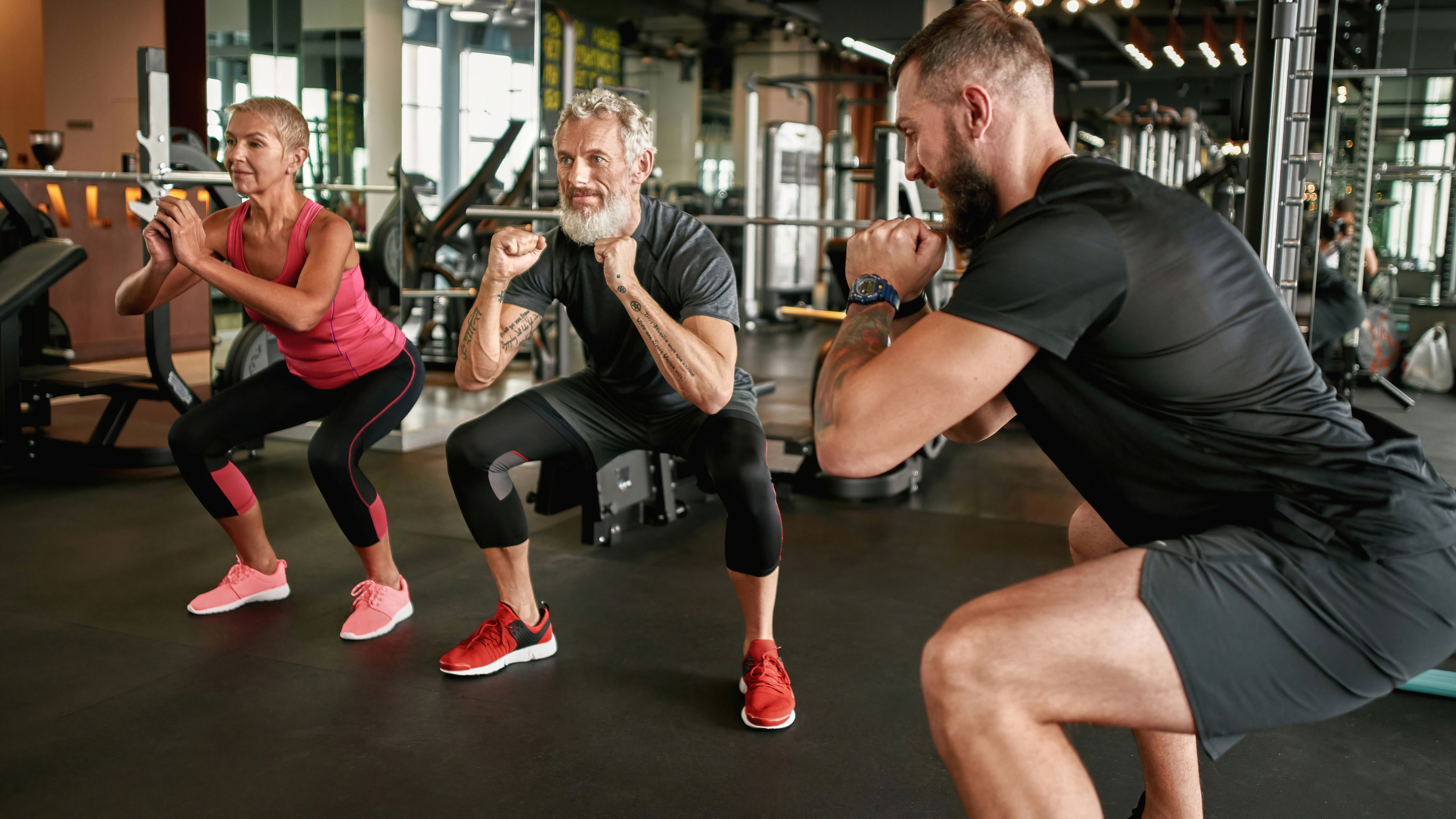These are the strength training moves you should be doing in your 30s vs your 60s, according to an expert trainer
People’s fitness goals often change as they age—here’s how your approach to strength training should evolve to keep up


Strength training is essential to maintaining your muscles and mobility as you age. But as you get older, your reasons for training are likely to change and your approach should too, according to Tanner Starmes, a trainer from Fit Responder.
“Your training should match your body’s needs and goals,” he says.
He explains that most people in their 30s exercise for different reasons than people in their 60s.
Those in the younger age bracket typically work out to build muscle for aesthetic reasons, but they’re also trying to maintain their fitness so they can keep up with kids and a busy work life. They often use exercise to deal with stress and to build a resilient, injury-proof body, too.
People in their 60s tend to have goals centered around longevity and are more focused on maintaining independence, preventing muscle loss, maintaining bone density, improving joint health and avoiding falls.
How to strength train in your 30s vs 60s
If you’re in your 30s and you want to build muscle—for aesthetic reasons or so that you can lift your kids comfortably—Starmes says you should focus on progressive overload (gradually increasing the difficulty of your workouts) and prioritize doing compound lifts with moderate-to-heavy weights. He also suggests training at a high intensity, but getting enough rest in between.
If you’re in your 60s and your goals are more longevity-focused, he suggests practicing joint-friendly, low-impact movement using moderate weights and higher repetitions to minimize injury risk. Focus on strengthening your stabilizing muscles and improving your balance, while incorporating flexibility and mobility exercises into your routine.
Start your week with achievable workout ideas, health tips and wellbeing advice in your inbox.
“Starting strength training later in life can feel intimidating, especially for those who are new to lifting or have experienced some deconditioning,” says Starmes.
In that case, he says it’s a good idea to start with bodyweight moves or gym machines, before trying free weights, because practicing these controlled styles of movements will help you build confidence. Take things slow and allow your body to adapt before increasing the intensity of your workouts.
“Strength training is not just about lifting weights—it’s about building a body that supports your lifestyle, whether that’s playing with your kids in your 30s or maintaining independence in your 60s,” says Starmes.
“By tailoring training to your needs at each stage of life, you’ll not only get stronger but also stay active, mobile and injury-free for years to come.”
Below, Starmes has outlined the moves each age group should prioritize.
Strength exercises for 30-year-olds
1. Squat (back or goblet)
- Stand with your feet shoulder-width apart, either resting a barbell across your shoulders (back squat) or holding a kettlebell at your chest (goblet squat).
- Keeping your chest up and core engaged throughout, bend your knees and push your hips back to lower until your hips are as low as your knees, or lower, if possible
- Push through your heels to return to standing.
2. Deadlift
- Stand with your feet hip-width apart, with a barbell, kettlebell or dumbbells in front of you on the floor.
- Keeping a neutral spine throughout, hinge at your hips to bend forward and grip the weights with your palms facing you.
- Engage your glutes and drive your hips forward to stand up.
- Lower the weight with control.
3. Pull-up (assisted if needed)
- Grab a pull-up bar with an overhand grip, hands shoulder-width apart (use a resistance band for an assisted pull-up).
- Engage your core and, using your back muscles, pull your weight upwards, bending your elbows, until your chin is above the bar.
- Lower with control.
4. Overhead press
- Hold a pair of dumbbells by your shoulders or a barbell in front of your collarbone.
- Brace your core and press the weights overhead.
- Lower to the start with control.
5. Bulgarian split squat
- Stand facing away from a weights bench, or other stable, knee-height surface, and rest the top of one foot on the bench.
- Bend your front knee to lower, until your front thigh is parallel to the floor.
- Push through your front heel to stand.
Strength exercises for 60-year-olds
1. Sit to stand
- Sit on a chair with your feet hip-width apart.
- Lean forward slightly and, without using your hands, stand up.
- Lower back down with control.
- You can make this harder by holding a weight or by tapping your butt on the chair before going into the next rep.
2. Seated shoulder press
- Sit upright with dumbbells held at shoulder height.
- Press the weights overhead without arching your back.
- Lower with control.
3. Banded row
- Attach a resistance band to a sturdy anchor point at chest height.
- Hold the handles of the band with your palms facing.
- Pull the band to your chest, bending your elbows and pulling them past your torso, squeezing your shoulder blades together.
- Return slowly to the start.
4. Step-up
- Place your right foot on a stable low surface, like a step.
- Push through the right heel to rise onto the step.
- Lower back down with control and switch legs.
5. Glute bridge
- Lie on your back with your knees bent and feet flat on the floor.
- Drive through your heels to lift your hips until your body is in a straight line from shoulders to knees.
- Squeeze your glutes at the top, then lower with control.
Tanner Starnes is a husband, father of two, and full-time firefighter/EMT with a lifelong passion for fitness. He began personal training in 2014 and quickly saw the impact he could make on others’ health and well-being.
He holds certifications from NASM, ASFA, and CrossFit Level 1, with previous credentials from ISSA. Tanner views fitness and nutrition as an ongoing journey—one that mirrors the continuous growth required in his role as a first responder.
Through Fit Responder, Tanner is proud to be part of a community dedicated to self-improvement and pushing personal limits.
Abby Driver is a freelance health writer and qualified fitness instructor based in Cornwall. Away from her desk she enjoys exploring the Cornish coast path, sea swimming and experimenting with new recipes.
You must confirm your public display name before commenting
Please logout and then login again, you will then be prompted to enter your display name.





